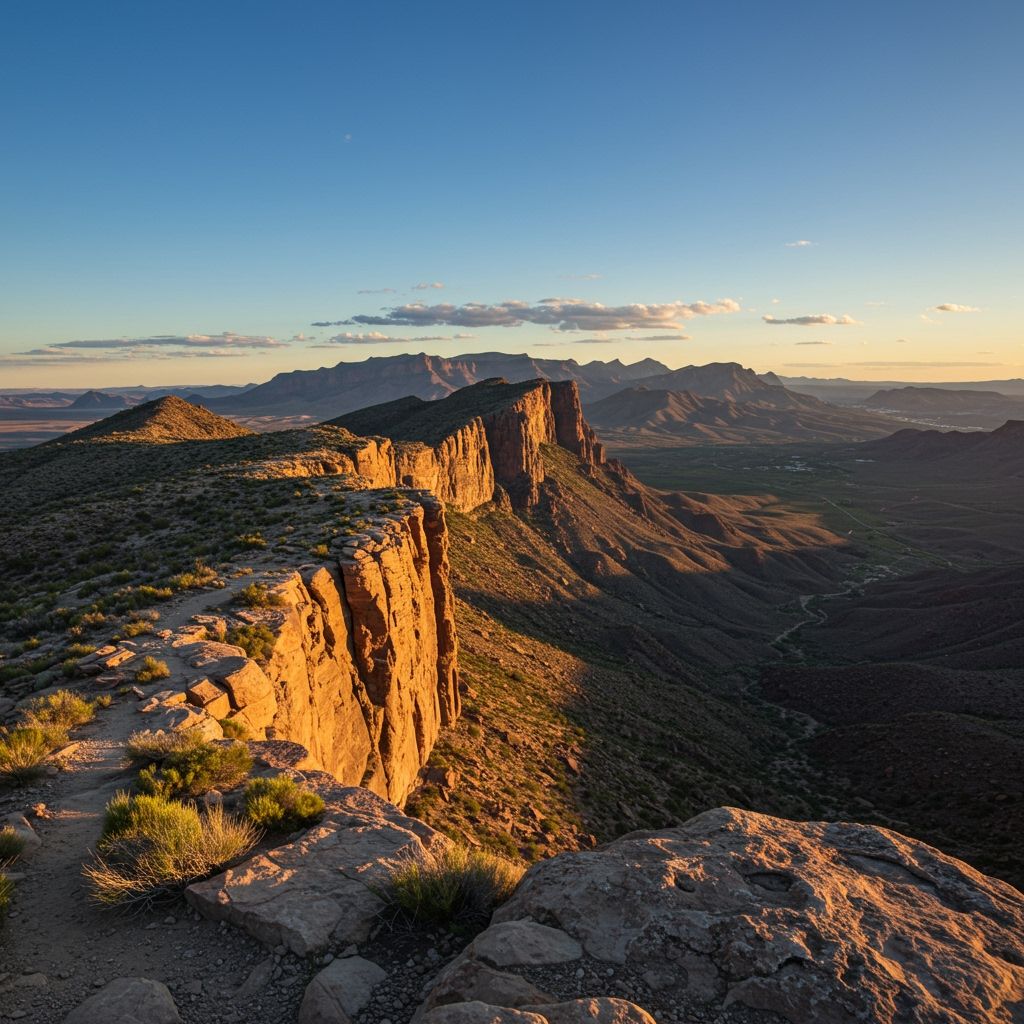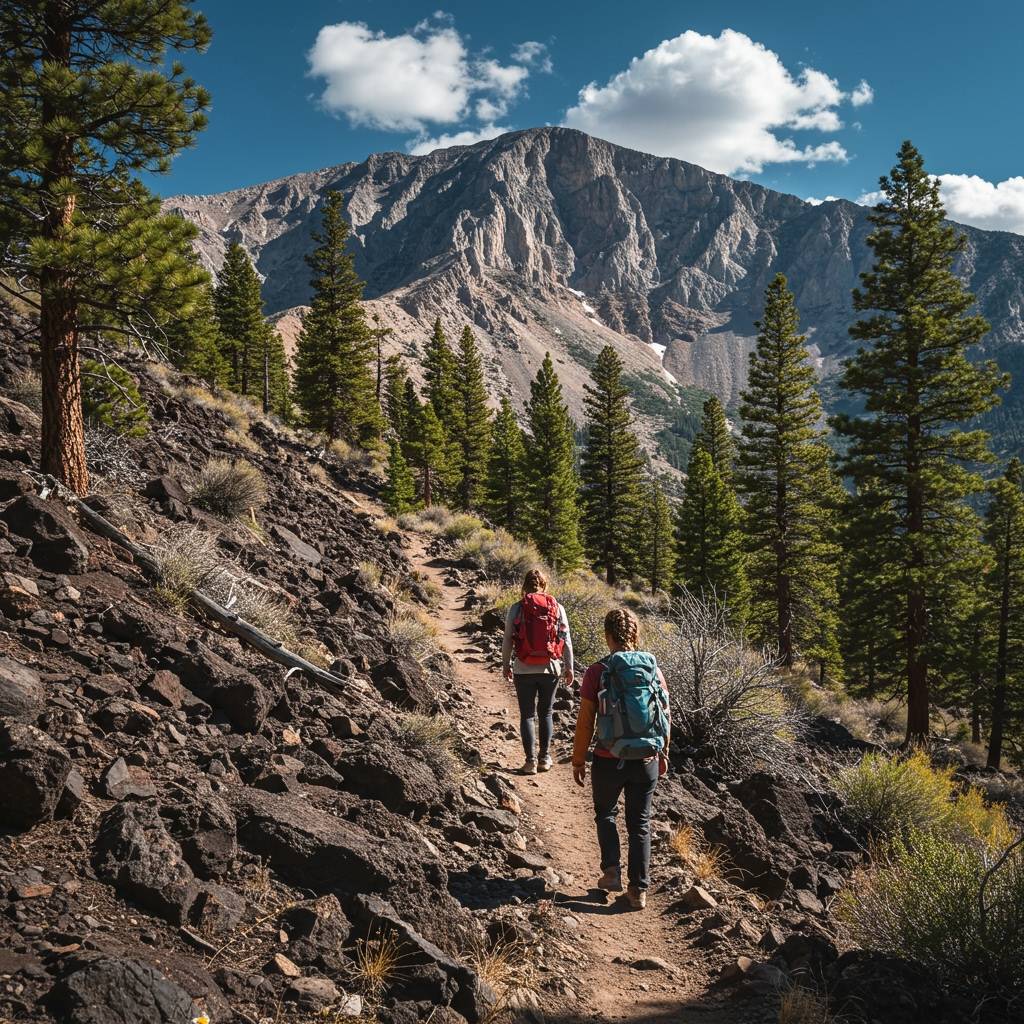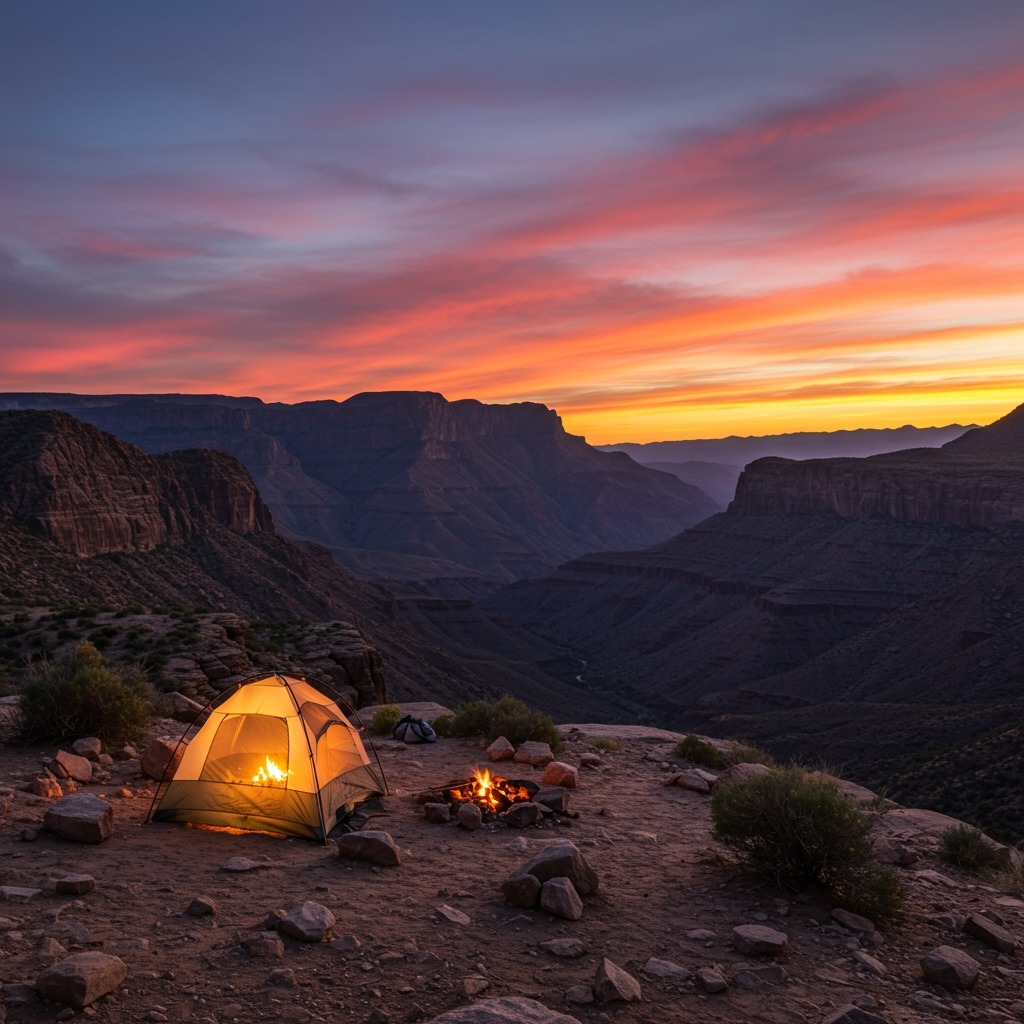Imagine standing on the precipice of a vast canyon, the air thin and crisp, with panoramic views stretching as far as the eye can see. Below, the ancient Chihuahuan Desert unfolds, while distant mountains ripple like a petrified ocean. This isn’t a dream – it’s the reality awaiting you on the South Rim Trail in Big Bend National Park, Texas.
This isn’t just a casual stroll. The South Rim Trail is a demanding, full-day commitment or an incredible overnight backpacking trip. This guide will equip you with the strategic insights and practical knowledge you need to successfully conquer this iconic Big Bend masterpiece. If you’re looking for more general hiking tips, consider our comprehensive hiking checklist to ensure you’re always prepared, or explore the differences between trekking vs hiking to understand the nuances of various outdoor pursuits. For those new to the great outdoors, getting started with camping for beginners can also provide a solid foundation before tackling a challenging route like the South Rim.

South Rim Trail: The Grandeur of Big Bend
The South Rim Trail is a jewel nestled within the Chisos Mountains, the “island in the desert” that rises dramatically from the floor of Big Bend National Park. This isn’t just any hike; it’s a deep dive into a unique ecosystem, blending desert ruggedness with mountain elevation.
- Location and Context: You’ll find the trailhead starting from the Chisos Basin, a natural amphitheater high in the mountains. This elevated starting point is crucial, as it provides a welcome respite from the intense desert heat found at lower elevations in the park. The trail itself is carved into the ancient volcanic landscape, showcasing geological wonders at every turn.
- Trail Overview: Distance, Elevation Gain, Difficulty: Make no mistake, the South Rim Trail is a strenuous hike.
- Trailhead: Most adventurers start from the Laguna Meadow Trailhead in the Chisos Basin. You can also begin via the steeper Pinnacles Trail.
- Loop vs. Out-and-Back: The most popular and rewarding way to experience the South Rim is as part of a larger loop. You have two main loop options:
- Pinnacles Trail up, Laguna Meadow Trail down (approx. 12.6 miles): This is often recommended for day hikers as it gets the steep climb out of the way early.
- Laguna Meadow Trail up, Pinnacles Trail down (approx. 12.6 miles): A more gradual ascent but a steeper descent.
- You can also hike it as an out-and-back, but the loop offers more varied scenery and a more complete experience.
- Total Mileage and Elevation: The full South Rim Loop typically covers around 12.6 to 14.5 miles, depending on exact route choices and whether you include the optional spur trails. Expect an elevation gain of roughly 2,000 feet, which translates to a significant uphill climb. The trail is generally rated as strenuous or difficult due to its length, elevation, and varied terrain.
- Key Segments and Landmarks:
- Pinnacles Trail vs. Laguna Meadow Trail: The Pinnacles Trail offers a more direct, steeper ascent through a narrow canyon, while Laguna Meadow provides a more gradual, scenic climb through forests. Both converge higher up, leading you towards the rim.
- Emory Peak Spur (Optional): Feeling ambitious? A 1.5-mile (one-way) spur trail from the main loop leads to the summit of Emory Peak, the highest point in Big Bend at 7,825 feet. This adds significant mileage and elevation, often requiring a scrambling climb at the very top. Only attempt this if you have ample time, energy, and favorable weather.
- The South Rim Itself: This is the payoff. After your ascent, the trail opens up to a breathtaking panorama. You’ll literally be hiking along the edge of massive cliffs, with views extending hundreds of miles into Mexico. Look for landmarks like the “Boot Canyon” and the “Mule Ears Peaks” in the distance. The sense of scale here is immense.
Planning Your South Rim Trail Adventure
Success on the South Rim Trail hinges on meticulous planning. This isn’t a hike you can just wing.
- Best Time to Hike: Big Bend National Park’s climate makes spring (March-April) and fall (October-November) the ideal times for this strenuous hike. Temperatures are milder, and the desert flora can be vibrant. Summers are intensely hot and should generally be avoided for this trail due to extreme heat exposure. Winter months (December-February) can be beautiful but bring the risk of ice and snow at higher elevations, especially on the North-facing slopes and on the Pinnacles Trail, requiring appropriate gear and caution.
- Permits and Regulations: If you plan to make it an overnight trip, you must secure a backcountry permit for designated campsites along the South Rim. These are highly sought after, especially during peak season, so book well in advance through the NPS website. Day hikers do not need a permit, but always check current park regulations before your visit.
- Water Strategy: Critically Important: Big Bend is a desert, and water is scarce. There are NO reliable water sources on the South Rim Trail itself. You must carry all the water you need. The general recommendation is at least one gallon (4 liters) per person per day for day hikers, and even more for overnight trips. Dehydration is a real and dangerous threat here. Consider carrying a water filter as a backup if you know of any intermittent springs, but do not rely on them.
- Navigation Essentials: While the trail is generally well-marked, carrying a detailed topographic map of the Chisos Mountains and a compass is crucial. Knowing how to read a topographic map can literally be a lifesaver if you stray off course or visibility drops. A GPS device or a reliable hiking app on your phone (with downloaded maps) can provide extra security, but battery life is a concern.
- Leave No Trace Principles: Big Bend is a delicate ecosystem. Practice Leave No Trace principles diligently:
- Pack out everything you pack in (including all trash, food scraps).
- Stay on marked trails to protect fragile vegetation.
- Respect wildlife by observing from a distance and never feeding them.
- Dispose of human waste properly (burying it 6-8 inches deep and 200 feet from water/trail).
- Camp only in designated campsites.
Essential Gear for the South Rim Trail
Your gear list for the South Rim Trail should focus on safety, comfort, and self-sufficiency. This isn’t a place to skimp.
- Footwear: Sturdy, broken-in hiking boots with good ankle support are essential for the rocky, uneven terrain. Consider how should hiking boots fit to avoid blisters on such a long trek – snug but not too tight.
- Clothing: Dress in layers. Even if it’s warm at the trailhead, temperatures on the exposed rim can drop dramatically, especially with wind. Pack moisture-wicking base layers, insulating mid-layers (fleece or puffy jacket), and a waterproof/windproof outer shell. Quick-drying fabrics are best. Think about suitable camping clothes that can transition from hiking to relaxing.
- Food & Snacks: Pack plenty of high-energy, easily digestible hiking snacks to fuel your body throughout the day. Think nuts, dried fruit, energy bars, and sandwiches. Don’t underestimate how much energy this hike demands.
- Safety Gear:
- First-Aid Kit: A comprehensive one to handle blisters, cuts, and minor injuries.
- Headlamp or Flashlight: With extra batteries, even for day hikes – you never know when you might be delayed.
- Sun Protection: Wide-brimmed hat, sunglasses, and high-SPF sunscreen. The sun exposure on the rim is intense.
- Whistle: For emergencies.
- Trekking Poles: Highly recommended! They save your knees on ascents and descents, provide stability on uneven ground, and help with river crossings if you encounter any.

What to Expect on the South Rim Trail: Views and Challenges
The South Rim Trail delivers on its promise of epic views, but it makes you work for them. Understanding the journey will help you appreciate the destination even more.
- The Ascent: Regardless of whether you take the Pinnacles or Laguna Meadow Trail up, you will be gaining significant elevation. Expect sustained uphill climbs, some rocky and demanding. Take breaks as needed, stay hydrated, and maintain a steady pace.
- The Views: As you gain altitude, the landscape transforms. You’ll look down into deep canyons, across sprawling desert, and eventually, the vast expanse of Mexico. Once you reach the South Rim, the views are simply unparalleled. Find a safe spot away from the edge to take it all in. This is why you came.
- Wildlife Encounters: Big Bend is home to diverse wildlife. You might spot deer, javelina, various bird species (including the rare Colima Warbler), and if you’re lucky and quiet, perhaps even a black bear or a mountain lion (though encounters are rare, especially with mountain lions). Always keep a safe distance and never approach or feed wildlife. Store food properly, especially if camping overnight.
- Weather Variability: The Chisos Mountains have their own microclimate. Temperatures can swing wildly from the desert floor to the rim. Be prepared for sudden changes, including strong winds, rain, or even hail, especially during monsoon season (late summer). The sun exposure is constant, so protect yourself.
- Trail Conditions: The trail is generally well-maintained but can be rocky, uneven, and sometimes narrow, especially near the rim. Some sections might require careful footing. Pay attention to your steps, particularly when tired.
Overnighting on the South Rim Trail (Optional)
For the ultimate South Rim Trail experience, consider an overnight stay. Watching the sunrise or sunset paint the canyon walls is truly magical.
- Backcountry Campsites: There are designated backcountry campsites along the South Rim. These are primitive, often just a cleared tent pad, but they offer incredible views. As mentioned, permits are mandatory and must be reserved well in advance through the NPS. Sites fill up quickly.
- Packing for Overnight: Your pack will be heavier for an overnight trip. You’ll need:
- A lightweight tent or trekking pole tent (ensure it can withstand wind).
- A sleeping bag rated for the expected night temperatures.
- A sleeping pad for insulation and comfort.
- A portable stove and fuel for cooking.
- Bear canister or bag for food storage (required in designated areas).
- Extra water or a reliable water filter/purifier if you plan to source water from potentially unreliable springs (always verify current conditions with rangers).
- Experiencing Sunrise/Sunset from the Rim: This is the primary draw of an overnight trip. The colors that wash over the canyon during these times are unforgettable. Set up your camp, then find a safe vantage point to soak it all in.
Safety First: Important Considerations
Your safety on the South Rim Trail is paramount. Be aware of potential hazards and prepare for them.
- Heat Exhaustion & Dehydration: The desert environment, even at altitude, can be deceptive. Carry and consume ample water. Electrolyte supplements can also help. Know the symptoms of heat exhaustion (dizziness, nausea, headache) and dehydration and act immediately.
- Falls & Injuries: The trail is steep and rocky. Twisted ankles, scraped knees, and more serious falls are possible. Hike within your abilities, wear appropriate footwear, and use trekking poles.
- Wildlife Encounters: While wildlife encounters are generally positive, understand how to react. Never approach bears or mountain lions. Store food properly to avoid attracting animals to your campsite. Make noise when hiking through dense brush to avoid surprising wildlife.
- Emergency Preparedness: Cell service is non-existent for most of the trail. Consider carrying a satellite messenger (e.g., Garmin inReach, Zoleo) for emergency communication. Always inform someone of your itinerary and expected return time. Be prepared to self-rescue for minor issues.
Beyond the Rim: Other Big Bend Adventures
The South Rim Trail is just one incredible experience in Big Bend National Park. Extend your trip to explore more of this vast and diverse landscape.
- Emory Peak: As mentioned, the highest point in Big Bend offers another challenging ascent and breathtaking 360-degree views, making it a great addition to your hiking checklist.
- Other Chisos Basin Trails: Explore easier trails like the Window Trail, which offers a dramatic view of the sunset through a natural notch in the mountains, or the nature trails around the Chisos Basin Lodge.
- Exploring the Desert Floor: Drive down to the Rio Grande for different scenery, hot springs, and opportunities for river trips. The vastness of the desert offers a completely different perspective. Consider easy walks like the Grapevine Hills Trail to Balanced Rock. Big Bend offers some of the best hiking in Texas.
- Dark Skies: Big Bend is designated as an International Dark Sky Park. On clear nights, the stargazing is simply phenomenal. Bring a blanket and gaze up at the Milky Way. You might also want to check out some things to do while camping that involve stargazing.

FAQ Section
Q: How long does it take to hike the South Rim Trail?
A: For most day hikers, the full South Rim Loop (12.6-14.5 miles) takes 8 to 12 hours. This depends heavily on your fitness level, pace, and how long you spend enjoying the views.
Q: Is the South Rim Trail difficult?
A: Yes, it is rated as strenuous or difficult. Its length, significant elevation gain, and rugged, exposed terrain make it a challenging hike requiring good physical fitness and proper preparation.
Q: Do I need a permit for the South Rim Trail?
A: Day hikers do not need a permit. However, if you plan to camp overnight at any of the designated backcountry sites along the South Rim, you must obtain a backcountry permit from the National Park Service in advance.
Q: Can I bring my dog on the South Rim Trail?
A: No. Pets are generally not allowed on trails in Big Bend National Park, including the South Rim Trail. They are only permitted on roads, in developed areas, and within 30 feet of roads. Always check the latest NPS regulations regarding pets.
Q: What’s the best time of year to hike the South Rim Trail?
A: The best times are spring (March-April) and fall (October-November) when temperatures are milder. Summers are too hot, and winters can bring ice and snow to higher elevations.
Conquering the South Rim Trail is more than just a hike; it’s an experience that will challenge you, reward you, and leave you with memories of one of North America’s most incredible landscapes. Prepare wisely, respect the wilderness, and get ready for an adventure of a lifetime!
